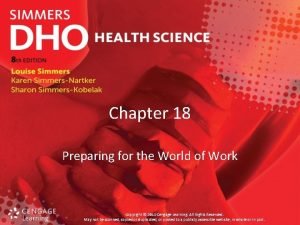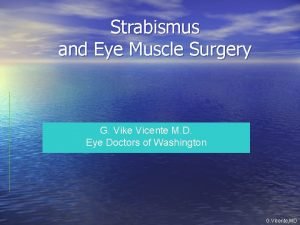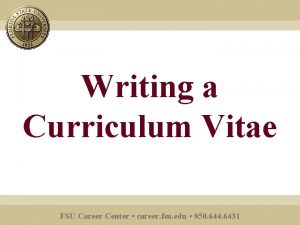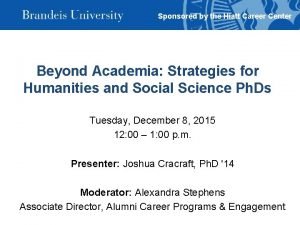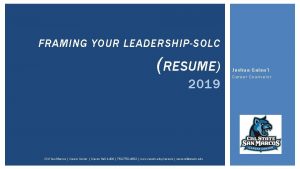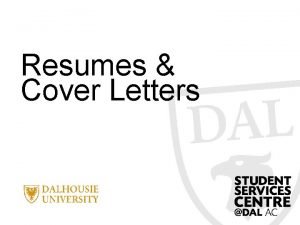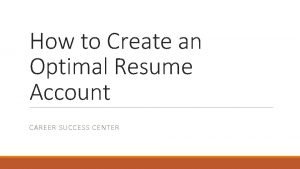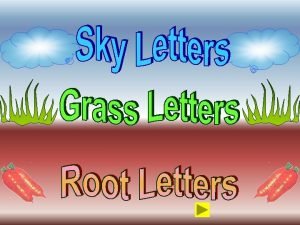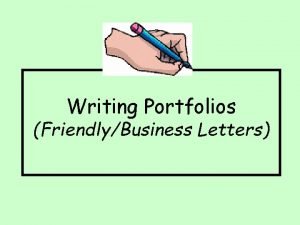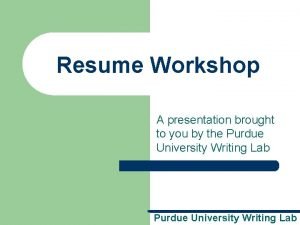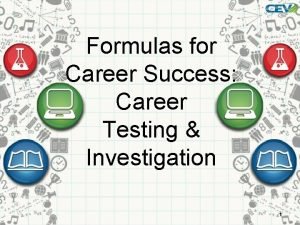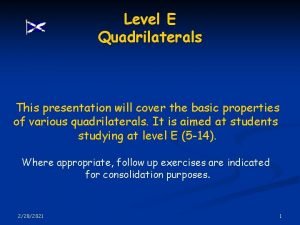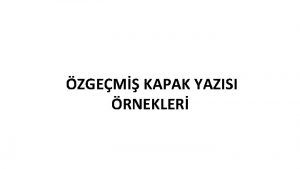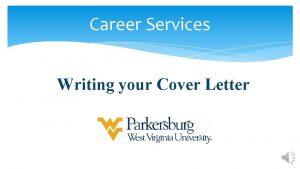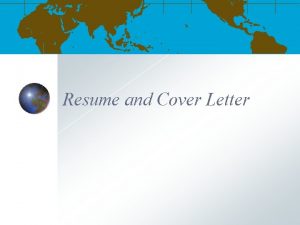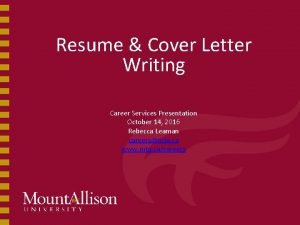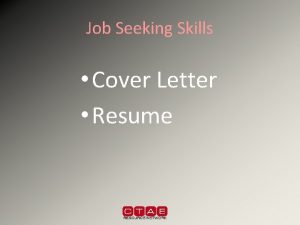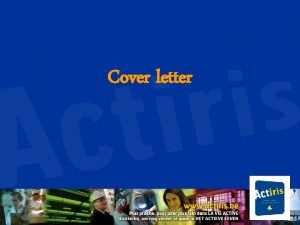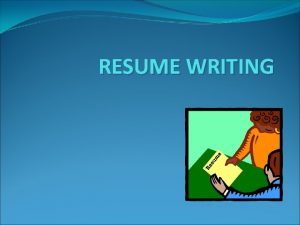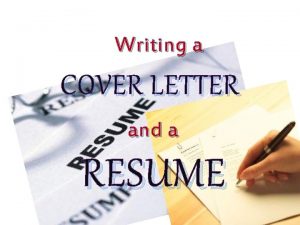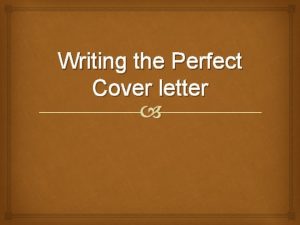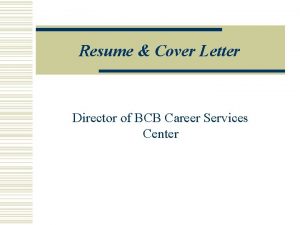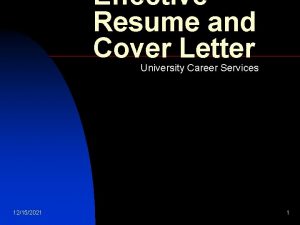Resume Cover Letter Writing Career Services Presentation January















- Slides: 15

Resume & Cover Letter Writing Career Services Presentation January 28, 2016 Maria Thistle careers@mta. ca www. mta. ca/careers

Why do I need a resume? Summer jobs, internships & full time employment Apply for graduate programs To build Linked. In page & other social media Detail relevant skills, strengths, experience, interests Peak interest and help you secure an interview

Comments From an HR Manager Your resume may not be the only “first” impression any more – clean up social media profiles and create a Linked. In account Please make it easy to access/open/read/print (hint: save as a. pdf file!) Research & target your resume for each position – form letters and resumes are obvious and are ignored Any grammatical mistakes are an excuse to toss your application – PROOFREAD carefully

What does a resume (or CV) include? Some of these Major Sections: Personal Profile Career or Job Objective Summary of Qualifications or Skills Summary Education Relevant Assignments Relevant Courses Work Experience Volunteer Experience Activities and Interests Awards and Scholarships Computer Proficiency Laboratory Skills, Technical Skills, Scientific Instrumentation Languages Licensure Certifications Professional Memberships Publications References

Most common resume sections for an undergraduate Header/Personal Profile Skills Summary Education Work Experience Volunteer Experience Activities and Interests Awards and Scholarships Skills: Laboratory Skills, Technical Skills, Scientific Instrumentation, Languages The sections you use will depend upon your objective, your experience, the type of job you are applying for, etc. There is no ‘one-size-fits-all’ resume.

How to build a good resume Not a list of job descriptions, rather a list of successes, skills, strengths Focus more on how you did your job, not what duties you performed Balance people and technical skills/qualifications Balance between detail and brevity – 1 -2 pages typically Visually pleasing: Consistent, concise, professional, uncluttered Always accompanied by a cover letter!

What are skills and do I have any? The competencies you need to perform the tasks required in a job Hard, soft, technical, transferable, employability, etc. Lack of experience. . Lack of skills? Employability skills for the Canadian labour force Fundamental Skills, Personal Management Skills, Teamwork Skills

How to build a good resume (2) Do not include: References (unless requested or they link you to the organization) Age Photo Personal details Small font size (i. e. no less than 10 pt. ) Excessive/irrelevant information/detail Reasons for leaving a past job

Make sure it’s targeted Analyze each point listed in the job description: what are they looking for and how do they describe it? Pull out key words – “power words” – and use them in your application; resume & cover letter. Applicant Tracking Systems: At large organizations, your resume may first be reviewed by software, looking for matching words, not a person Prove you’re the best candidate for that particular job

Power words to keep in mind (from resumetemplatetop. info)

Formatting Recommendations Use a standardized font Keep the important RELEVANT info at the top Page rules are more flexible – 2 pages PDF – cover letter & resume = 1 document Use headings like your own personal letterhead – consider using it on your cover letter too to make a cohesive application

Cover Letters Always include a cover letter Add value & expand on your resume Your introduction using your own voice Be clear and concise. Don’t use overly formal language. What can YOU do for THEM? NEVER SEND A FORM LETTER Examples

Cover Letter Format Business/formal format: header, address, date and salutation (find a name to address it to!) Paragraph 1: Introduce yourself and your interest in the organization Showcase the research you’ve done. Make allusions to the company’s values & goals and how it fits with your aspirations. Paragraphs 2 & 3: Highlight specific experiences that align with the job you’re applying for. Include successes and soft skills Closing Paragraph: Reiterate your interest, develop a strong closing statement that proves you’re the best candidate Signature

Cover Letter Format

Resume Summary Cover Letters and Resumes should showcase your skills, but also your personality They should be targeted, ensure that relevant experience is highlighted Prove to the hiring committee that you’re the best candidate for the job Resumes are living documents. They will and should change, not just as you add new experiences, but depending upon the type of positions you are applying for
 Chapter 18.4 participating in a job interview
Chapter 18.4 participating in a job interview Latent squint meaning
Latent squint meaning Alternate prism cover test
Alternate prism cover test Maddox rod test procedure
Maddox rod test procedure Cum laude gpa
Cum laude gpa Hiatt career center appointment
Hiatt career center appointment Csusm career center
Csusm career center Career objective
Career objective American career college optimal resume
American career college optimal resume Sky grass root letters
Sky grass root letters Friendly greeting letter
Friendly greeting letter Character reference in resume
Character reference in resume Fcs lanchpad
Fcs lanchpad Formulas for career success career testing & investigation
Formulas for career success career testing & investigation This presentation will cover
This presentation will cover Kapak yazısı örneği
Kapak yazısı örneği
